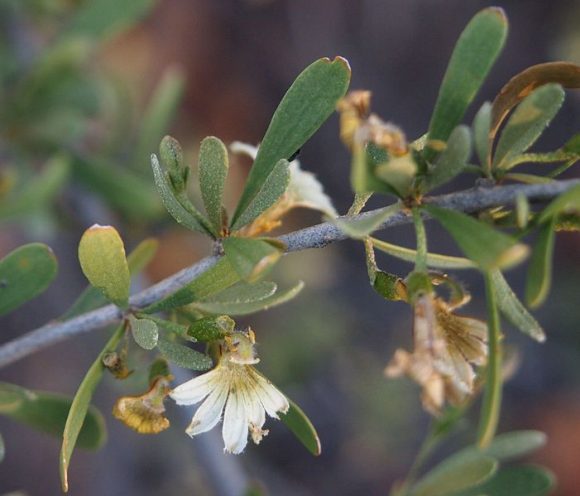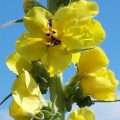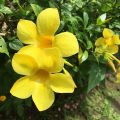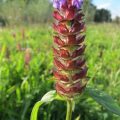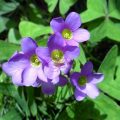- The Miraculous Shiny Bush Plant - January 18, 2021
- Colorful, Edible and Medicinal Celosia - January 10, 2021
- Radish, a Nutritional Power House - December 19, 2020
Currant bush, also known as prickly fan flower, maroon bush, and botanically referred to as scaevola spinescens, is a flowering plant belonging to the goodeniaceae family. It is native to Australia where it has been used as aboriginal medicine for ages.
[Note: The Right Flowers is not a medical site. Knowledge of and information about the therapeutic benefits and applications of flowers, while known through the ages, does not constitute medical advice. If you are having health issues, you should consult with a physician.]
The prickly fan flower is a hardy, evergreen shrub that closely resembles rosemary. It is commonly found in semi-arid areas and scrublands. The maroon bush is highly tolerant and can withstand drought and mild salinity.
The plant features prickly foliage and produces yellow or cream-colored blossoms in summer. As a herbal remedy, native communities used it to treat various ailments including urinary tract problems, colds, rashes stomach problems and boils. These tribes used the whole plant to treat sores by crushing the leaves, flowers, and stems and steaming them. The physicians would treat the boils by steaming them with the maroon bush vapor.
Alternatively, the crushed aerial parts are steeped in boiling water for about an hour and left to cool down overnight. The concoction is strained, and the debris discarded while the resulting infusion is taken orally to treat various conditions.
In 1946, a cancer patient claimed that he was cured of cancer after ingesting a currant bush infusion. This ignited a lot of interest in the prickly fan flower which was seen as a cure for cancer. For almost half a decade, the maroon bush was hailed as a cure for cancer and physicians generously prescribed the plant’s extracts to cancer patients.
Basically, the active compounds in the maroon bush are phenolic compounds. These compounds give the plant the ability to inhibit the progression of cancer and kill cancer cells because they have antioxidative effects.
In a study published in PubMed Central, researchers sought to investigate the antiviral, and antibacterial ability of the currant bush. Out of the 14 different bacteria tested, the results showed that currant bush extracts were highly effective in inhibiting 6 out of the 14 bacteria. The extracts were shown to inhibit the growth of both Gram-positive and Gram-negative bacteria. In addition, the results indicated that maroon bush extracts had antiviral activity minus toxicity which often results in negative side effects.
Using the above results, researchers concluded that the claims made by the Australian Natives were correct.
While the currant bush is not famous for its flowers, it is still a useful plant due to its herbal properties plus its ability to withstand harsh growing conditions.
